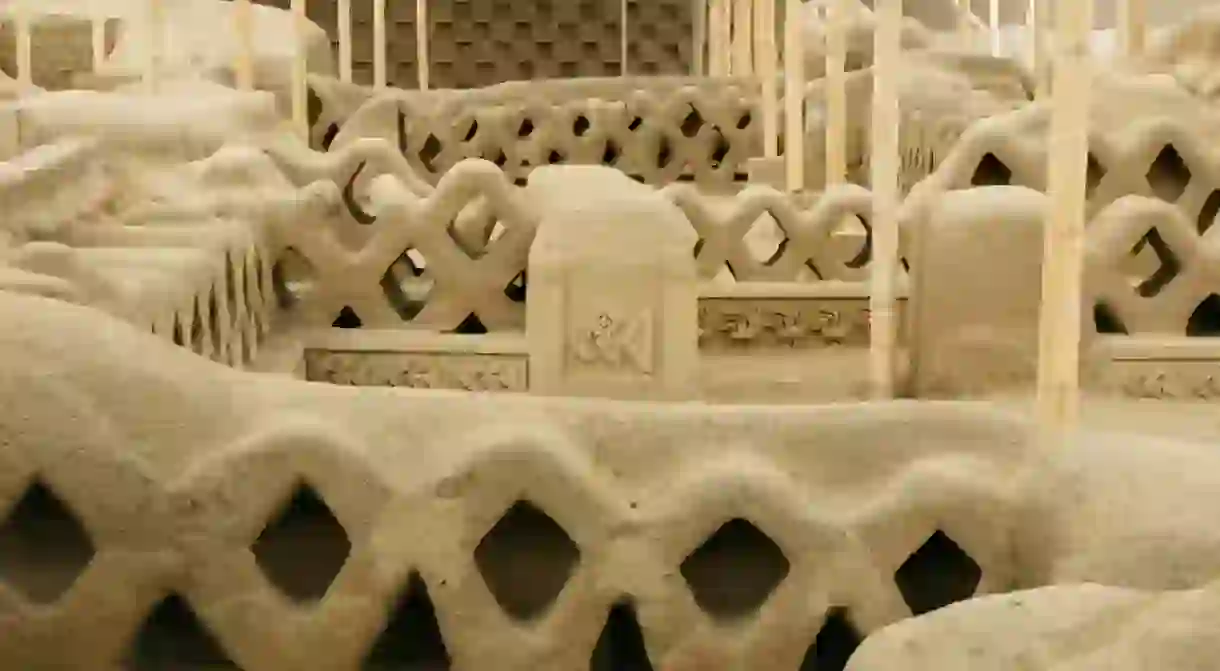Welcome to Chan Chan, Peru’s Abandoned Mud-Brick City

Chan Chan is the largest adobe city in the Americas. It was built in 850A.D. by the Chimu culture to be their empire capital. Located in Trujillo, the northern region of Peru, Chan Chan was conquered, looted and forgotten only to be remembered and used as a mass grave during a local revolution, Chan Chan is now recognized as a World Heritage site. Learn more about Chan Chan’s past and present history.
Largest pre-Columbian city in the Americas
Chimu was a pre-Incan culture established in the Moche Valley located five kilometers (three miles) from Trujillo, one of Peru’s most important cities. Folklore explains the origins of the Chimu through the story of an unknown ruler who arrived in a boat to the beaches of Trujillo followed by his entourage years after the previous empire fell. This man’s name was Tacaynamo and he became the founder of the Chimu culture. It’s believed that Tacaynamo was responsible for the founding of Chan Chan, a city by the Pacific ocean where every ruler was to be treated like a god and honored with a new citadel (there are 10 citadels in Chan Chan, meaning the Chimu had 10 rulers, although only four have been recovered). The Chimu culture lived in a classist society: the Great Lord on top, followed by curacas or nobles, then a group of wealthy citizens and finally the working class consisting of metalworkers, fishermen, servants, etc. The Chimu dedicated a lot of time to fishing in reed watercrafts called caballitos de totora, canoe like vessels still used in Trujillo’s beaches until this day.

The Chimu were great engineers who, aside from building a giant city of adobe, built 87 kilometer (54 mile) long water canals connecting to Chan Chan. This adobe city was the Chimu’s most ambitious project. Its more than 20 square kilometers (7.7 square miles) housed nearly 100,000 people in its heyday. It was designed to maintain a strict stratification order.


The only part of Chan Chan visitors are allowed into is the Tschudi complex. Like the other 10 royal citadels, the Tschudi complex has 12 meter (40 feet) tall walls and only one entrance. It was most likely built to honor Ni, the Chimu god of the sea, hence the many ocean fauna figures like pelicans and fish that decorate its thick walls. It’s divided into a main plaza, northern and southern plazas, temples and administrative centers. What seems like a water reservoir that was built in the middle of the complex, is actually a pond that was used for religious ceremonies like worshiping water and fertility. Another interesting finding is the chakanas, or Inca crosses built in certain rooms. The chakana is a symbol that represents the three worlds in pre-Columbian cosmogony: heaven, Earth, and the underworld. You can find chakanas in ancient fortresses like Ollantaytambo and Písac.

Conquered, looted and a mass grave
The Chimu were conquered by the Incas in the mid 15th century after a bloody resistance. The battle was so decisive for the Inca expansion in the north of Peru that they even built a fortress near Lima called Paramonga to commemorate this war. Chan Chan was reportedly looted and partially destroyed. When Spanish conquistadors arrived in 1532, they found Chan Chan in ruins with a few people living there. Nevertheless, the Spanish conquistadors heard a rumour about the Chimu hiding treasures inside the walls of Chan Chan, so they immediately knocked down what was left of the city and may have found gold, silver and other great treasures in royal burials.


In 1932, a political party led a revolution from Trujillo against the government. When the government regained control of the situation, insurgents were hunted down and taken to Chan Chan, where they were forced to dig their own graves before facing the firing squad. According to locals’ testimony, at least 5,000 people were buried in Chan Chan during the revolution. Only 42 were officially sentenced to death in court-martial.


Current status
Despite preservation attempts from the local government, Chan Chan continues to decay due to natural disasters like the consequences of El Niño and earthquakes. More than 130,000 people visit the largest adobe city in the Americas every year.















